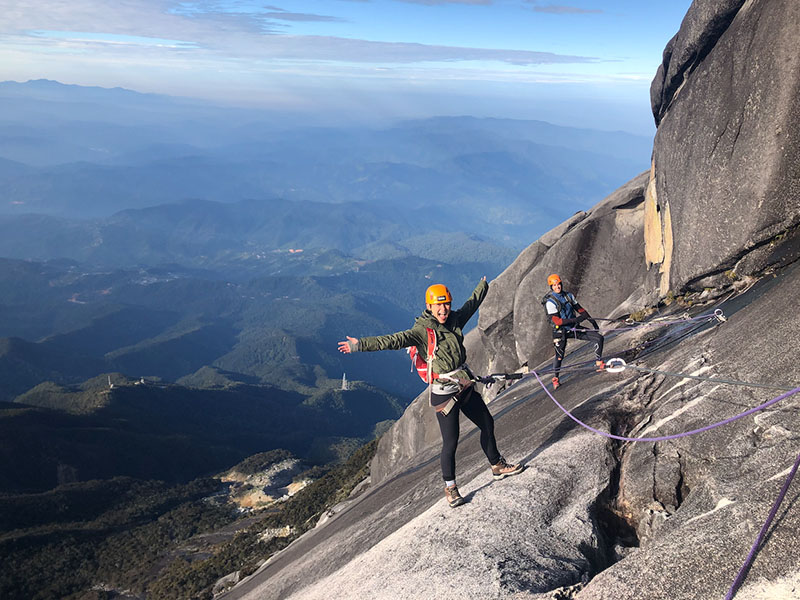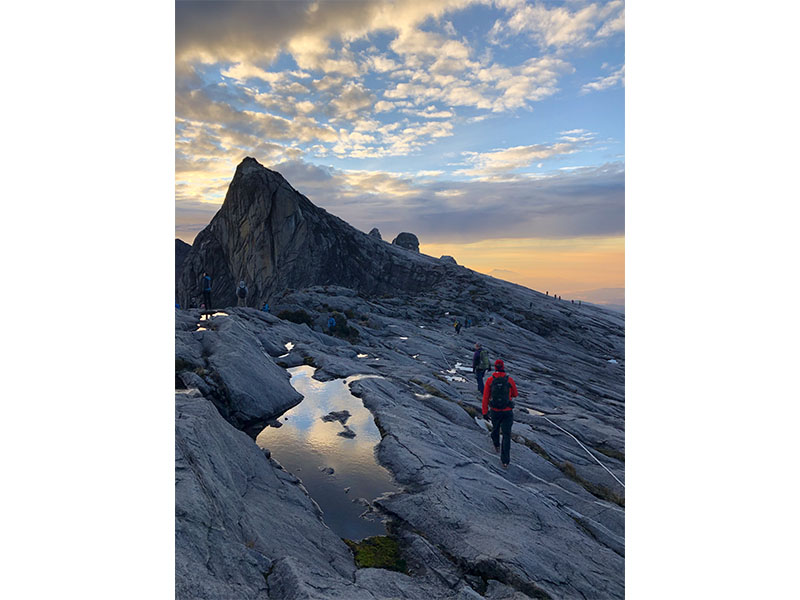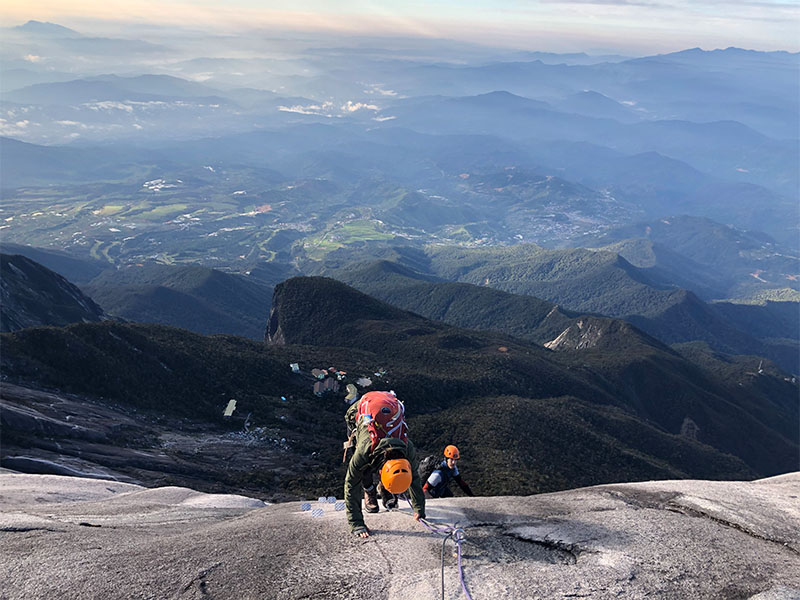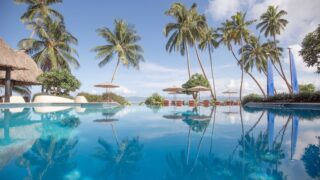Adrenaline junkie LEANDA RATHMELL recommends Sabah’s famous summit, Mount Kinabalu, to kickstart the crave to climb.
The challenge
My boyfriend and I have always enjoyed adding a challenge to our travel itineraries, especially if it comes in the shape of a mountain. Our first weekend away was spent atop glorious Mount Rinjani in Lombok – sure, it involved two shower-less days, one tiny tent and a 3am wake-up call, but it was an epic experience. And that blanket of stars is forever etched in my mind.
Six years later, we’re still racing each other to the top – from Norway’s Trolltunga, across the Twelve Apostles of Cape Town to the northern peaks of Sapa, Vietnam. My knees still ache and I’m cursing every step, but I have yet to find a more rewarding way to see the world.
If you haven’t had that taste of triumph or experienced a sunrise from the peak of a mountain, then our most recent endeavour is one worth adding to your bucket list; there’s no better place to bag your first mountain summit than in the bosom of Borneo.
Mount Kinaba-who?
Located in the Malaysian state of Sabah, Mount Kinabalu is the highest nonHimalayan peak in Southeast Asia at 4,095 metres. A UNESCO World Heritage Site, Kinabalu Park is made up of a vast biodiversity of plants (including rare orchids and the famous Rafflesia) and a variety of landscapes – from rainforest to alpine meadows, and then, as you near the top, desolate rocky flats and majestic granite peaks. This makes the trek rewarding every step of the way.
Despite the tragic loss of 18 lives in the 2015 earthquake, Mount Kinabalu is widely known as one of the safest and most conquerable peaks in the world with highly-qualified guides, appropriate gear, thorough safety briefings and strict guidelines. For one, it’s compulsory to be accompanied by a registered mountain guide, and only 185 permits to climb are issued per day. Also, since the earthquake, climbers can now only tackle Kinabalu via Timpohon Gate, using one of two new trails, Ranau Trail and Kota Belud.
Getting there
Kinabalu Park is approximately 80km from the capital, Kota Kinabalu (KK). Set aside a full day before your intended climb date – that way you can stay within the vicinity of the Park the night before. Most packages include transportation from KK, but if you’re wanting to save some pennies by doing it yourself, the journey is pretty straightforward and all part of the adventure!
All public transportation to the Park leaves from the city centre. To get there from KK Airport, an airport shuttle leaves hourly (RM5, or around HK$9), stopping at Center Point, Horizon Hotel and finally Padang Merdeka, which is where you want to get off. Here, you’ll spot minivans bound for Ranau; they generally charge RM30 ($55) for the two-hour journey.
They only leave when they’re full, so suss out which van looks ripe for departure to avoid waiting around for too long. There are several lodge options both in and around the Park, but keep in mind that you want to set off no later than 10am the following morning, so stay as close as you can.
Sutera Sanctuary Lodges is a great option for any size of group or budget, with everything from luxury suites and six-bedroom lodges to hostel accommodation. (Note: it books up fast!) Since we arrived at 6pm, our needs were simple: shower, bed and food. We opted for a basic private room with shared bathroom – it was clean, comfortable and, for $446 a night, came with an awesome breakfast buffet spread to kickstart the day. Our tour operator, Mountain Torq, had its office located directly at the headquarters, making it a seamless registration process and easy meeting point to join our guide.
Preparation & Packing
Though Mount Kinabalu has been conquered by folks of all ages, it’s no easy feat. Mountaineering experience isn’t required, but if you’re not physically fit, odds are you’ll be struggling fairly early on. The first day is a solid four-to-six hour uphill endeavour to reach Laban Rata and Pendant Hut, where all hikers are required to stay the night before tackling the summit the following morning.
You can take a break and refuel at the many rest stops on the way up too, but the trick is to keep momentum and avoid the midday heat. The sooner you reach the halfway mark, the more time you have to not only claim the top bunk in your dorm room, but, most importantly, relax, shower, send a postcard from the Malaysia’s highest post box and chow down at the early buffet dinner while getting to know your fellow climbers. But once the clock strikes 8pm, it’s lights out and a race to sleep before the 2.30am wake-up call.
Though temperatures are a comfortable 20 to 25 degrees at the start point, they drop quickly, particularly at night and at the summit, where it can be sub-zero. Layering is key, as well as a waterproof jacket, warm gloves and a head torch. We also made sure to pack energy bars, water purification tablets, a towel and bathroom essentials for the overnight stay.
Rise n’ Climb
I’ll admit, waking up at 2.30am – when it’s freezing, your legs are aching, and a neighbouring bunkmate has been snoring all night – is arguably the lowest point in the journey. Conversation is at bare minimum as zombies gather in the communal room for a quick breakfast of coffee and peanut butter and jelly sandwiches.
The first segment continues to be testing with close to two hours of pitch-black darkness and nothing to look at but the spotlight of your headtorch tailing the back of the climber in front. What feels like an endless flight of narrow stairs causes congestion and a weary pace. Gradually, however, the terrain opens up and dawn starts to shed a little light on your conquest. As the sun rises and hits the vast expanse of granite on the summit plateau, the views are spellbinding; cotton candy skies, dramatic drops, towering tips, and a horizon that even our guide, 13 years on, admits to constantly being humbled by.
What Goes Up
Now, if balconies and bridges make you queasy, then I can confidently say this next suggestion might not be for you. Before your climb, you’ll be presented with two options for the descent: Standard (following the same trail back to base) or Via Ferrata.
Meaning “iron road” in Italian, a via ferrata is a manmade pathway consisting of a series of rungs, cables and bridges built into a mountain’s rockface. It allows access to scenic areas of the mountain that aren’t typically available to novice climbers. For those looking for some added adrenaline, Mount Kinabalu has the highest via ferrata in the world. There are two routes available, Walk the Torq (2-3 hours) and Low’s Peak Circuit (4-6 hours). Both entail teamwork, vertical traversing and nerve-wracking drops that will get your heart racing. We came with a “go big or go home” attitude and opted for Low’s Peak Circuit; it requires a little more fuel in the tank to tackle the steep climbs, ladders and suspension bridges that are scattered along the trail, but it’s well worth the adventure and multiple vantage points along the way.
Believe it or not, this obstacle course you just endured only returns you to Laban Rata, meaning you still have 6km distance to return to Timpohon Gate. So, my final piece of advice is this: there’s an endless selection of beach resorts along the coast of Sabah. Book a night in advance and head straight for the bar – an ice-cold beer never tasted so good!
Book your climb
The 2-Days 1-Night Low’s Peak Circuit package starts at HK$3,790 and includes guiding by a via ferrata trainer, an overnight stay at Pendant Hut and meals. For more information or to book your climb with Mountain Torq, visit mountaintorq.com
Like this? Read more in our Travel section:
Subscribe to Expat Living magazine now so you never miss an issue.









